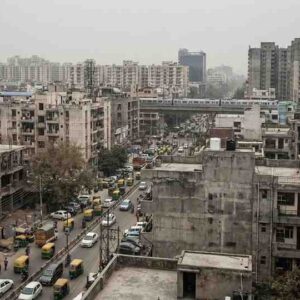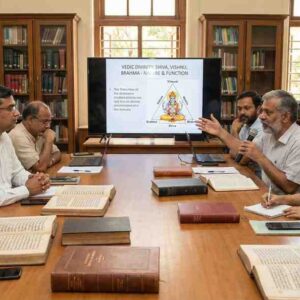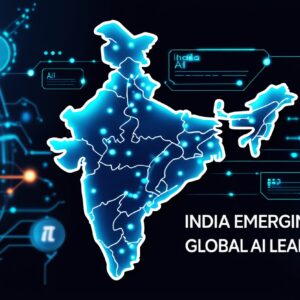Media: A Double-Edged Sword in Uttar Pradesh
As India’s largest and most politically vibrant state, Uttar Pradesh is a focal point for media coverage. With its vast electorate and diverse socio-political fabric, the media wields considerable influence over public opinion and political narratives. While the media often acts as a crucial pillar of democracy, serving to inform and empower citizens, its role in Uttar Pradesh’s political arena raises a critical question: Is it fulfilling its duty responsibly, or is it becoming a tool for manipulation?
Key Metrics
- Media Reach: Uttar Pradesh has over 78% television penetration and 41% internet penetration, with social media playing an increasingly influential role in shaping public opinion. (Telecom Regulatory Authority of India, 2023)
- Daily News Consumption: Over 60% of Uttar Pradesh’s population regularly consumes news through regional TV channels and newspapers, making these platforms critical in electoral communication. (Media Reach Survey, 2022)
- Social Media Influence: With 65 million active internet users, platforms like Facebook, Twitter, and WhatsApp have become key tools for political campaigns. (Internet and Mobile Association of India, 2023)
Informative Role of Media
1. Bridging the Information Gap
The media in Uttar Pradesh plays a critical role in disseminating information about government policies, electoral processes, and developmental initiatives. Platforms likeDoordarshan Uttar Pradeshand widely read regional newspapers such asDainik JagranandAmar Ujalaensure that even rural populations remain informed about current affairs.
2. Highlighting Social Issues
The media has brought attention to pressing issues, from caste-based discrimination to women’s safety, often prompting governmental action. For instance, widespread media coverage of crimes against women led to the launch of initiatives likeMission Shakti.
3. Amplifying Electoral Awareness
During elections, media campaigns encourage voter participation and educate citizens about their rights. The Election Commission frequently collaborates with media outlets to run awareness drives, ensuring informed and responsible voting.
Manipulative Dimensions of Media
1. Political Bias
A significant portion of Uttar Pradesh’s media landscape is perceived to be aligned with political parties, which can skew coverage. Allegations of selective reporting and agenda-driven narratives often overshadow balanced journalism.
2. Sensationalism Over Substance
To attract viewership, certain outlets focus on sensational stories rather than nuanced reporting. This tendency can amplify communal tensions or political polarizations, impacting social harmony.
3. Paid News and Propaganda
The Election Commission of India has flagged instances of paid news, where media outlets promote specific candidates or parties in exchange for financial incentives. Such practices compromise journalistic integrity and mislead voters.
4. Social Media Manipulation
Social media, while a powerful tool for communication, is increasingly being weaponized for misinformation. Fake news, doctored videos, and polarizing hashtags often trend during elections, influencing voter behavior in unpredictable ways.
Recent Trends in Media’s Political Role
1. Rise of Regional Media
Regional television channels and vernacular newspapers have gained prominence in Uttar Pradesh, addressing local issues more effectively than national media. However, these platforms are also susceptible to political and corporate pressures.
2. Social Media as a Game-Changer
Platforms like WhatsApp and YouTube have democratized information dissemination but also pose challenges in verifying authenticity. Political parties actively leverage these platforms for targeted campaigns.
3. Citizen Journalism
The proliferation of smartphones and internet access has given rise to citizen journalists who document grassroots realities. While this trend enhances accountability, it also increases the risk of unverified information spreading rapidly.
Recommendations for Responsible Media
- Strengthen Ethical Journalism: Media houses should prioritize unbiased and fact-based reporting, resisting external pressures from political entities.
- Regulate Social Media: Collaborate with platforms to curb misinformation by promoting verified content and penalizing fake news.
- Promote Media Literacy: Educate citizens about identifying credible sources and avoiding misinformation, especially in rural areas.
- Encourage Transparency: Media ownership and funding sources should be disclosed to enhance public trust in journalistic content.
Conclusion
The media in Uttar Pradesh remains a powerful force in shaping political narratives, with the potential to either empower democracy or distort it. While it has played an essential role in raising awareness and driving accountability, its susceptibility to bias, sensationalism, and manipulation cannot be ignored.
For the media to truly serve as the fourth pillar of democracy, it must strike a balance between its informative and ethical responsibilities. Ensuring transparency, accountability, and a commitment to truth will be crucial in fostering a politically informed and engaged electorate in Uttar Pradesh.













